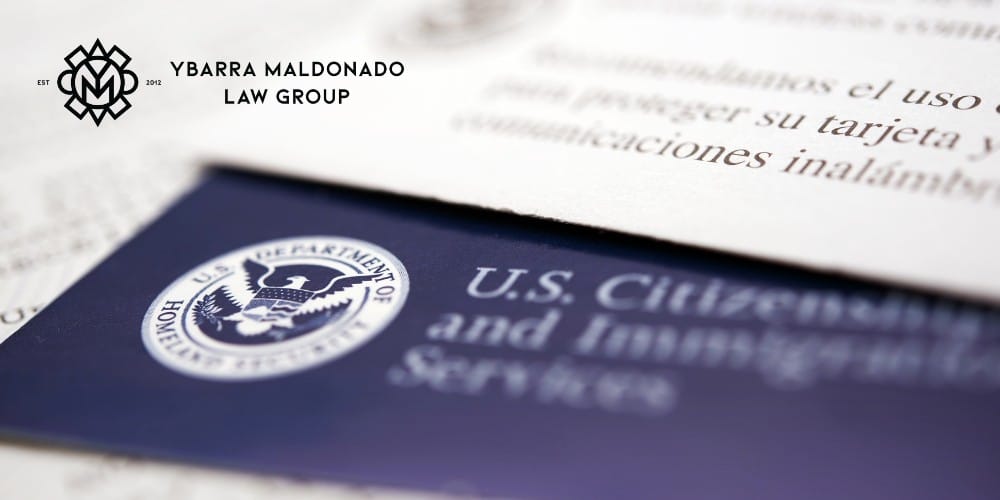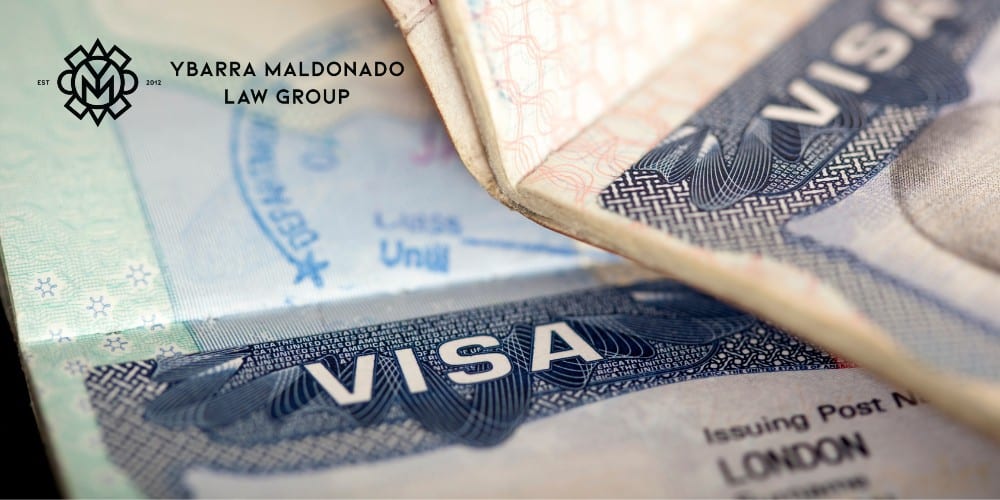REQUEST FOR EVIDENCE (RFE)
DON’T HESITATE TO REACH OUT TO US!
Our Law Firm is committed to becoming the best Law Firm for Latino, migrant, and Spanish speaking communities in Arizona.

Let’s say you’ve submitted all your documents and paperwork to USCIS while applying for a marriage-based green card. You let out a sigh of relief as you believe the long process is finally over. However, you then receive an RFE in the mail from USCIS. What exactly is a Request for Evidence (RFE), and what does it mean for you? The best way to find out is to speak with a qualified Phoenix immigration attorney.
At Ybarra Maldonado Law Group, we take pride in providing quality legal representation and immigration services to our clients in Arizona. Immigration law can be highly complicated and difficult to navigate without help from an immigration lawyer. That’s why it’s important to speak with an experienced immigration attorney if you receive an RFE in the mail. We’ll ensure that you have all the evidence you need for your RFE response. To schedule a consultation for an initial case review, please call our law firm at 602-910-4040 today.
What Is a Request for Evidence (RFE)?
RFE stands for “request for evidence.” Unlike what many people fear, it is not a rejection or a denial of your application. As the name suggests, it is a request from the United States Citizenship and Immigration Services for more information. The USCIS officer who reviewed the application simply wants more supporting evidence before they move forward with a decision.
Many people use an RFE as a way to review their application and improve upon it. Think of it as your second draft. If you included enough evidence the first time, your application was likely approved. If you lack sufficient evidence, however, this is a great opportunity to strengthen your argument that your marriage is legitimate. This is a second chance to prove your eligibility for marriage immigration benefits.
What Are the Chances of Getting Approved After an RFE?

According to data from the USCIS, 87.1% of applicants were approved after their initial application in 2020. In the same year, RFEs were issued for 35.8% of applicants. The rate of approval after receiving an RFE was 68.2%.
Can You Avoid an RFE?
It is certainly possible to avoid receiving an RFE. The best way to avoid an RFE is to provide all required initial evidence the first time you submit the immigration forms. Working with an attorney from the beginning will ensure that you provide all the requested documents the first time you submit your application. Below, we outline a few recommendations to ensure that you submit enough initial evidence.
Every immigration form that you submit has form instructions that tell you how to properly fill them out. The filing instructions also explain the evidence needed for submission to USCIS. If you’re missing documents when you submit the form, you will most likely get a USCIS RFE. Include all requested supporting documents the first time to avoid this.
If the documents you submit aren’t in English, you might consider submitting certified document translations. Otherwise, you might receive an RFE. The translation must come from someone who is not you and not your sponsor. This allows the USCIS officer reviewing your application to do so more smoothly. We recommend using a law office that handles foreign language translations.
For family-based visas in which a petitioner is sponsoring the applicant, USCIS requires proof that the sponsor makes at least 125% of the federal poverty level. If the sponsor does not make enough, the USCIS will likely issue an RFE. If this happens, you will need stronger evidence to support the sponsor’s financial status. Sometimes, the USCIS may recommend a second sponsor for your case.
If you are submitting an immigration application form from within the United States, you must provide legal proof of entry. This means that you need proof of having entered the country legally. Most applicants can accomplish this by showing a Customs & Border Protection stamp in their passport or by showing a Form I-94.
Key Parts of an RFE
It’s important to understand the different parts of an RFE. There are four key components, all of which are crucial for ensuring that you meet the eligibility requirements in your RFE response. Any RFE you receive from USCIS will be based on a generalized template. Your reviewing officer will fill in the original template and customize it to reflect your specific circumstances.
The beginning of an RFE generally includes a quotation from United States immigration law. Whichever law is included will apply to the requirements surrounding your type of application. You can usually ignore this part of the RFE.
The next section outlines the evidence provided by you in your application. Check over this list to ensure that they received all the evidence you submitted originally. If you discover that something you submitted is missing from this list, resubmit it with your RFE response packet.
In this section, USCIS lists the missing evidence specifically required by the form instruction. This section tends to be much longer than the other sections. This is because the USCIS includes a lot of information, such as unmet eligibility requirements or alternative documents that you can submit if you don’t have a way to get what was originally requested. Get with your attorney to closely review this section of the document to ensure that you include all additional evidence in your response.
The final section of the RFE outlines your response deadline for the original RFE notice. It tells you how much time you have to craft your response and mail it to the USCIS. The mailing address should be listed in this section as well. It is important to remember that USCIS must receive your response by the date listed in this section. Simply getting it in the mail by this date will not count.
Also included in this section is an outline of the consequences of failing to submit even a partial response by the listed deadline. In most cases, the USCIS will simply review your response without the requested evidence. Then, they will likely deny the application.
What Should You Do if You Receive a Request for Evidence?
As soon as you receive the RFE, we recommend that you carefully read over each section. The USCIS won’t send another RFE, so you should keep this one for your records. Get with your attorney and have them help you with this step of the process. They will ensure that you provide all the requested materials to USCIS, giving you a better chance for approval.
How to Respond to a USCIS Request for Evidence
Once you get with your attorney, you should review the original application package you sent to USCIS. Sometimes, USCIS officers might overlook evidence that you originally submitted. When this happens, they may request information that you have already sent. If this is the case, simply make a copy of the original document and include it with your response.
This is the most important step of the response process. The RFE outlines exactly what evidence the USCIS needs from you. You and your immigration lawyer should use this as an opportunity to strengthen your case, establish eligibility, and rectify your original application. Ask your attorney what some potential weaknesses are in your case. Then, provide evidence that helps to eliminate that weakness, even if USCIS didn’t ask for it.
Gather the requested information and include it in your packet. Everything the USCIS requested should be stacked together in the order it is listed on the RFE. You should place the original RFE before everything else. You can even include a cover letter that lists what your response packet includes. The more organized your packet is, the easier it will be for the reviewing officer to identify everything.
Finally, you will mail your response packet to the USCIS address listed on the RFE. Do not mail the packet to any other address, even if you mailed something to that address in the past. It is best to send your packet as early as possible to ensure that it arrives by the deadline. Additionally, you should consider mailing the packet through a service that includes delivery tracking and delivery confirmation. This will allow you to prove that you sent your package on time if something goes wrong during delivery.
Do I Need a Lawyer for an RFE?
While it is not required that you hire a lawyer for this process, they can be an invaluable asset for your immigration case. The Phoenix immigration lawyers at Ybarra Maldonado Law Group have extensive experience handling various immigration and USCIS issues. If you need help ensuring that your RFE response is as strong as it can be, contact our law firm today. To schedule an appointment with us, please call 602-910-4040. You can also fill out our online intake form.


